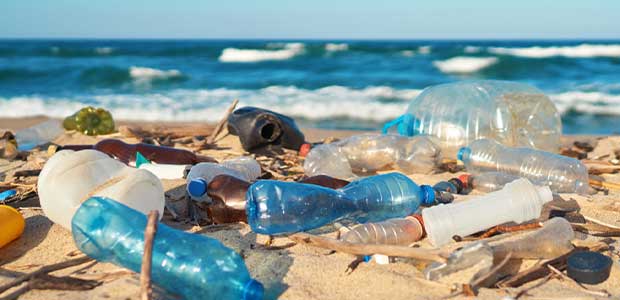
Using Spectroscopy to Fight Plastic Pollution
Discovering more than one way to fight this problem is essential. Here's how spectroscopy might be able to help.
- By Jane Marsh
- Apr 14, 2023
As plastic pollution continues to wreak havoc on the environment and wildlife, experts are rushing to develop solutions. Recently, scientists discovered that spectroscopy—a facet of astrochemistry—may play a role in fighting plastic pollution.
If you’re unfamiliar with spectroscopy, you’re probably not alone—it isn’t one of the most straightforward techniques for those outside the field. Yet, its ability to help experts understand plastic characterizations is essential to mitigation efforts.
The Plastic Pollution Problem
Plastic is everywhere. As one of the most durable materials man has ever created, we rely on plastic in every industry and facet of life. Sadly, our plastic consumption—nearly 400 million tons wasted annually—has seeped into the environment, causing significant ecological harm to habitats and species.
Plastic products can take hundreds and thousands of years to decompose. For example, it takes 450 years for bottles and bottle caps to break down, at which point marine species like sea turtles, fish and seagulls have ingested them.
Microplastics have even made their way to remote regions of the world by air. According to one study, researchers discovered plastic particles at the highest points of the Swiss and Bavarian Alps, raising concerns about the implications of plastic air pollution on human health.
Because of the amount and varying sizes of plastic pollution, eradicating waste is challenging. Scientists must pinpoint plastic litter and where it gets distributed to make any significant headway.
What Is Spectroscopy, and How Can it Solve Plastic Pollution?
You might hear about spectroscopy through the National Aeronautics and Space Administration—the splitting of light that enables scientists to view elemental colors beyond Newton’s prism. Depending on the wavelength, colors get emitted or absorbed, shedding light on an object’s chemical makeup. Spectroscopy also includes interactions between electrons, protons and ions.
The study of spectroscopy is not for the faint of heart—yet those who’ve delved into the science could hold the key to resolving plastic pollution. Groundbreaking research has examined the possibility of spectroscopy, recognizing that it aids in improved plastic characterization and a deeper understanding of its distribution path. These two pieces of information are critical to identifying new plastic waste removal and remediation methods.
Current strategies—Raman spectroscopy or Fourier-transform infrared spectroscopy—have limitations in analyzing plastic samples. However, photoluminescence spectroscopy (PL) is a much faster technique that requires fewer components. PL spectroscopy uses at least 200 to 850 nanometers to measure absorption, providing a quick reading of the sample material, concentration and deposited metals on plastic pellets.
The study underscores specificity that other features miss, paving the way for scientists and mitigation experts to tailor removal solutions more effectively.
Handheld Scanner Makes Plastic Identification Easier
The largest global chemical company a handheld device that uses infrared spectroscopy to identify an item’s plastic type. For example, grocery bags usually contain high-density polyethylene (HDPE), while water bottles have polyethylene terephthalate (PET).
HDPE and PET must be recycled differently due to the two varying materials—a common problem in recycling plastic waste. Considering all the different plastic items and the numerous types of plastic used in manufacturing, it should be of little surprise that many things are not recycled correctly.
Scanning plastic with the device reveals numerous data, including various types of plastic to aid in sorting. For example, volunteers can use the spectrometer to sift through plastic litter more efficiently. It’s also a cost-effective product that is easy to employ—far less expensive and intricate than larger laboratory equipment.
Developments like this device could help create a more circular economy, ensuring that plastic waste is repurposed or disposed of appropriately.
Spectroscopy is Just One Way to Fix Plastic Pollution
It’s important not to limit our ability to fight plastic pollution to one method. While spectroscopy presents an opportunity to better mitigate recycling and plastic litter removal, there are countless other ways—some discovered, some not—to resolve our plastic pollution problem.
Editor's Note (7/6/2023): The word "nearly" was added to the second sentence of the first paragraph under "The Plastic Pollution Problem." Some sources report more than 380 million tons, while others, such as the United Nations Environment Programme, explain that the number is about 400 million tons.
About the Author
Jane Marsh is an environmental writer. You can keep up with her work on her site Environment.co.